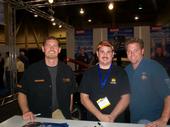It has always been my dream to own a corvette. Those who know me know that I can be quite single-minded about them and I don’t even remember how my obsession with them started. I fed my love of cars with any info I could come across: checking out books on cars from the library whenever wed make a school field trip. And every time we’d pass a corvette I’d exclaim “oOo! a vette!”, but with maturity now its just a meow and a little drool. Just recently I found a beautiful C4 online, and she became mine in February and was delivered to me in March. I showed her off to everyone, I’m so proud of her. So now when I see another ’Vette on the road I admire her and wave to the other driver but don’t get insanely jealous anymore. I feel so very blessed that I am able to fulfill my dream while I am young and able to fully enjoy it.
So I’d like to share just the beginning of the History of the Corvettes so you can enjoy them too.
General Motors was the largest corporation in size, the reach of its endeavors and profits at the beginning of the 50s. It was twice the size of the second biggest company in the world and had a vast array of businesses ranging from home appliances to insurance and building Chevrolets, GMCs, Pontiacs, Oldsmobiles, Buicks, Cadillacs and locomotives. It was so big that it made more than half the cars sold in the United States. But it didn’t have a sports car. The idea of a car coming from GM that could compete with Jaguar, MG or Triumph was almost absurd.
Harley J. Earl, GM’s chief designer, was in charge of the corporation’s ambitious dream. With the goal of making a concept at around 2k the average of an American sedan he handed it over to Robert F. McLean, and a concept car emerged.
McLean used off-the-shelf Chevy mechanical components. The chassis and suspension were for all intents and purposes the 1952 Chevy sedan’s, with the drivetrain and passenger compartment shoved rearward to achieve a 53/47 front-to-rear weight distribution over its 102-inch wheelbase. The engine was essentially the same dumpy inline six that powered all Chevys but with a higher-compression ratio that raised its output up to 150 horsepower. Fearful that no Chevy manual transmission could handle such extreme power, a two-speed Powerglide automatic was bolted behind the six. And to keep tooling costs in line, the body was made out of fiberglass instead of steel.
While the car was conceived with rigorous attention to the bottom line and production feasibility in mind, it was still only intended to be part of GM’s Motorama exhibit at the 1953 New York Auto Show. That is until Ed Cole, Chevy’s chief engineer, saw it. Cole, then immersed in development of the world-changing 1955 “small-block” V8, is said to have literally jumped up and down with enthusiasm for the Motorama car. So before it even got to New York, and after some corporate machinations, the engineering to put it into production began.
And that’s how the legacy began, with 5 more generations to follow to date, a production of over 50 years, every passing generation’s engineering, design, and performance gets better.
references: Edmunds.com Chevrolet Corvette History: http://www.edmunds.com/chevrolet/corvette/history.html
Roger’s Corvette Center (fascinating and engrossing page for the vette lover)http://www.rogerscorvette.com/history.htm
